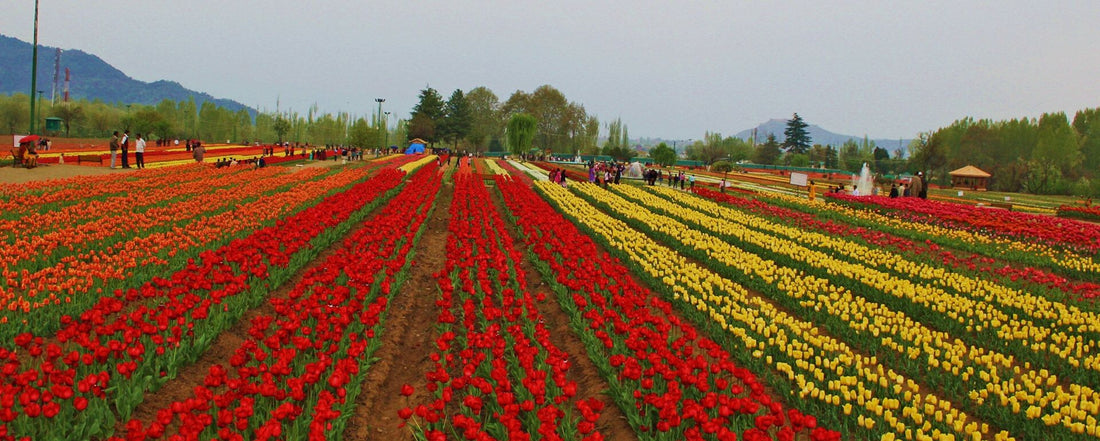Formerly known as Siraj Bagh, located in the foothills of Zabarwan with an overview of the beautiful Dal Lake spread across an area of over 20 hectares is Asia’s largest Tulip garden, a major attraction of tourists in SpringKashmir. A riot of colors with more than 70 plus species of tulips in all colors, it is a garden area embellished with more than two million beautiful tulip buds.
“Atulip doesn’t strive to impress anyone. It doesn’t struggle to be differentthan a rose. It doesn’t have to. It is different. And there’s room in thegarden for every flower.”
MarianneWilliamson
Tulip Garden was the inception of then Chief Minister of Kashmir, GhulamNabi Azad who wanted to revive the Siraj Bagh and turn it into a major tourist attraction. Inaugurated in 2007 by Sonia Gandhi, it was renamed to Indira Gandhi Memorial Tulip Garden. Ever since then, it has been successfully attracting lakhs of tourists every year to Kashmir in spring to witness the full bloom of these pretty flowers.
The life span of Tulips is not more than 30 days. This year due to the earlier arrival of spring the garden has been thrown open 16th March and is believed to remain open till 15th May.
Let me walk you through this grandiose garden, get ready for a virtual tour of Tulip Garden through this picture blog.
Tulip Garden Welcomes you
Tulips are native to Central Asia. Although they are the quintessential Dutch flower, they actually originated in Central Asia, including Turkey, where the tulip is the national flower.
Tulips are a part of same family of lily flowers (and therefore relatives of onions!)
The most popular flower is the rose, the second most popular chrysanthemum. The tulips are in third place in the row of most popular flowers.
Most species of tulips canreach between 2.7 to 4 inches in height.
Flower is shaped like a cupand it consists of 3 petals and 3 sepals. Since petals and sepals look alike,they are both known under the common name "tepals".
Nazir Ahmad serving Traditional Tea and Kehwa to the tourists (Image Credits: Ijtaba Shafi, Kashmir Photography Club
Tulips are known for their bold colors and beautiful shape, and most varieties are indeed almost perfectly symmetrical.
A number of fountains in the garden area along the pedestrial lawn presents a refreshing feel
Like many other flowers, tulips are edible! In fact, during World War II, tulips and tulip breads were often eaten by those who couldn't afford other foods. The flowers can be used to replace onions in many recipes and are even used to make wine.
The English word tulip is derived from a Persian word, delband, which means turban. The flower was seen as turban-shaped, hence the name.
Tourists enjoying the mesmerizing beauty of Siraj Bagh
The Netherlands are the largest producer and exporter of tulips worldwide, growing and exporting nearly three billlion bulbs each year.
Tulips develop from the bulbs,located 4 to 8 inches under the ground. Soil need to be well aerated and moist.
Tulips are planted in the fall.
The National flower of Turkey and Iran is the tulip.
Woman carrying baskets of weeds, working tirelessly on the beautification of this lovely garden. Image Credits: Maliq Abi, Kashmir Photography Club
Tulips can be divided into about 150 various species, but there are more than 3,000 naturally occurring and genetically cultivated varieties of the flower worldwide. New varieties of tulips are regularly created, but it takes each one at least 20 years to go from the beginning stages of cultivation to your local florist's shop.
Enjoyed the tulip garden virtual tour? Let us know in the comments below :)

